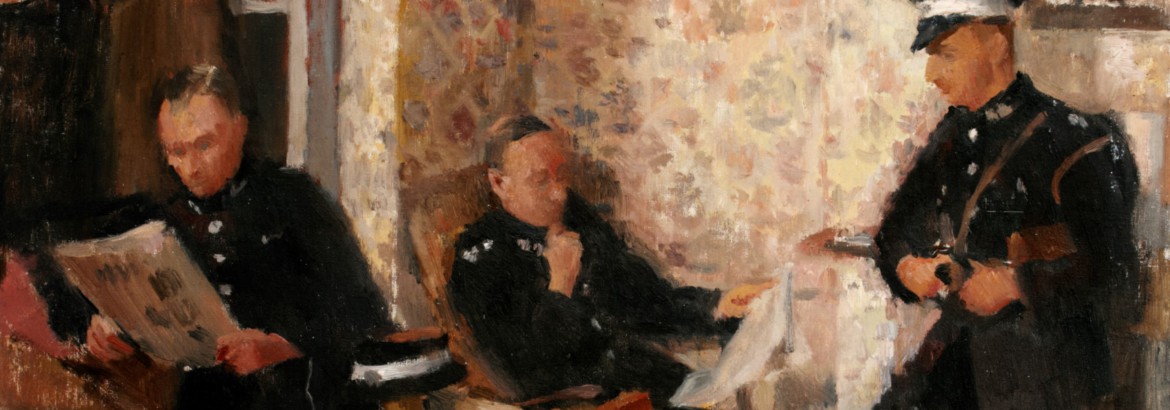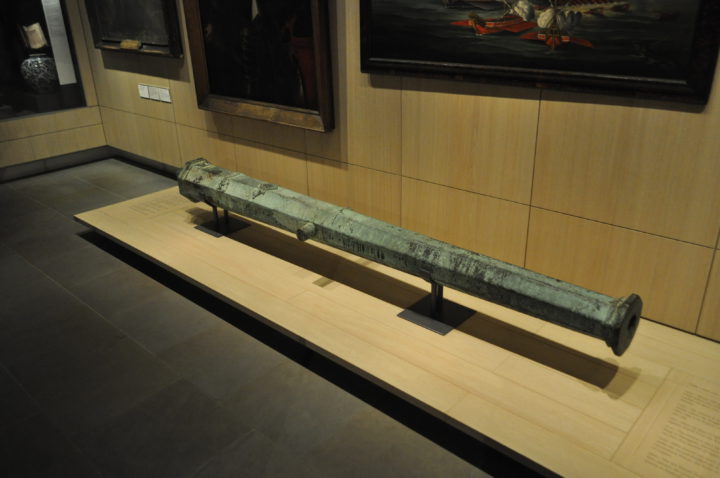Dating from 1528 or 1529, this cannon is the earliest known gun still in existence which is without a doubt British. It is adorned with the coat-of-arms of the Grandmaster of the Order of St John as well as that of Henry VIII showing that the King had it specially made for the Order. Since then it has spent time all over the Mediterranean – in Italy, Malta, Tripoli and Cyprus – and, after many years at the bottom of the sea, it has now found its way back to Britain and the Museum of the Order of St John.
For over 200 years, from the early fourteenth century, the island of Rhodes in the Mediterranean was the home of the Order of St John and the location of its hospital. However, on 18 December 1522 the Grand Master of the Order, Philippe de l’Isle Adam, finally surrendered to Ottoman forces under the command of Suleiman the Magnificient. Two weeks later, on 1 January, he was allowed to sail out of Rhodes harbour with the honours of war, along with the surviving members of the Order and those islanders who chose to accompany him.
For some years afterwards the Hospitallers – as the Knights of the Order of St John were also known – were without a home. During this period Philippe de l’Isle Adam came to England to raise support for the order. In 1528 he met the then king, Henry VIII, who promised him 20,000 ducats (ducats being the trade coin used in Europe at time) towards an expedition for the recovery of Rhodes. In the end, this gift took the form of nineteen bronze cannons, of which this is one, as well as 1,023 cannon balls. The cannons could fire cannon balls of 4lb. in weight up to three-quarters of a mile, with a point-blank range of 250 yards.
Henry VIII had set up Britain’s armament industry by importing foreign gunfounders, including Francis Arcana who arrived from Italy in around 1523. It is believed that it was Francis Arcana who made the nineteen cannons for the Order in 1528 or ’29 in the family foundry near the present Blackfriars Bridge. It is because Britain’s armament industry was so new at the time, that this cannon comes to be the oldest known surviving example of a British gun.
On 23 March 1530, the Emperor of the Holy Roman Empire, Charles V, granted the Order of St John sovereignty of the islands of Malta and Gozo and the North African city of Tripoli. There was no longer the same need to recapture Rhodes and so Brother John Sutton, one of the Knights of St John, brought the cannons to the Order’s new home of Malta, travelling via Syracuse in Italy. Later the Order took the cannons to their other new home, Tripoli, but, in 1551, after six days of fighting, Ottoman forces captured Tripoli from the Knights and seized the cannons. The Ottoman forces took some of the cannons, including this one, to Cyprus, where they used them in the Siege of Famagusta. Before the siege, Famagusta had been the last city in Cyprus under Christian control, but the siege resulted in the Ottoman forces taking it in 1571. The cannons were lost.
Over three hundred years later, in around 1906, a sponge-diver happened to find this cannon, half buried in sand and mud, under the sea in Famagusta harbour. It was dredged up and placed outside Government House in Nicosia, the home of the British Governor of Cyprus. In 1960, when Cyprus gained its independence from Britain, the cannon was presented by the last British Governor to the Order of St John in Clerkenwell. For many years it was in the Cloister Garden, and it is now on display in the Museum’s Order Gallery, not far from where it was made nearly five-hundred years ago in Francis Arcana’s foundry.



